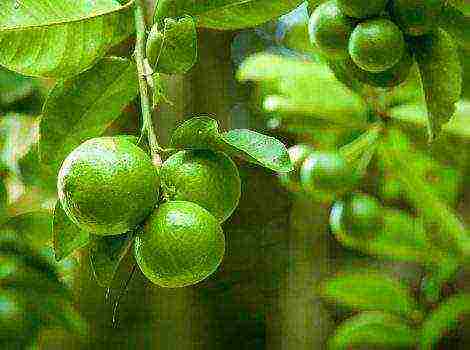Content
- 1 Types and varieties of indoor gerberas
- 2 How to care for indoor gerberas?
- 3 Reproduction of room gerbera at home
- 4 The main problems in growing
- 5 The origin and appearance of gerbera
- 6 Conditions for gerbera in different seasons - table
- 7 Features of planting and transplanting
- 8 Flower care
- 9 Diseases and pests, signs and control measures - table
- 10 Reproduction methods
- 11 Florist reviews about growing room gerbera
- 12 Types of gerbera with photo
- 13 Growing gerberas from seeds
- 14 How to care for a gerbera in a pot?
- 15 Gerbera garden: planting and care
- 16 Description of the plant
- 17 How to grow a gerbera in a flower bed
- 18 How to grow gerbera indoors
- 19 How to prolong flowering in a bouquet
Nowadays, on the windowsills of city apartments and private houses, you can see more and more plants that were usually grown in the garden. Was no exception and indoor gerbera, home care for which should be comprehensive. This will allow you to achieve a long lush flowering, pleasing the eyes of the owner with its spring colors.
Types and varieties of indoor gerberas
Gerbera, cultivated in greenhouses, front gardens and flower pots, is a herbaceous perennial plant from the Asteraceae family with a variety of colors, with the exception of blue. In the wild, there are more than 80 species found in South Africa, tropical Asia and Madagascar. Outwardly, the flower is very similar to chamomile, for which in literature, especially in English, its second name is used - transvaal chamomile.
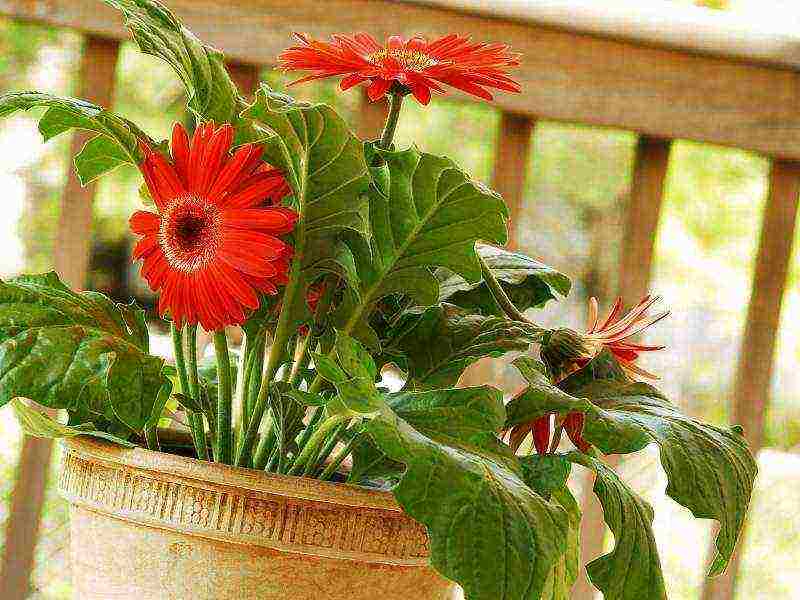
In indoor floriculture, compact forms and varieties of Jameson gerbera are grown, not exceeding 25 cm in height. The most commonly used varieties for landscaping apartments and offices are Happipot, Ilios, Hummingbird, Parade and Duroramix. The last variety with semi-double inflorescences is distinguished by a longer life phase in comparison with other forms.
How to care for indoor gerberas?
Caring for a gerbera in a pot is not particularly difficult. However, when purchasing a flower or receiving it as a gift, the owner should know that the plant, of which he becomes the owner, needs proper care, allowing the tropical plant to fully develop and bloom.
Lighting and temperature control
The flower needs a lot of light, tolerating the direct sunlight of the morning and evening sun well. In the summer, you should expose the gerbera to fresh air or organize systematic ventilation of the room where it is located. In the winter season, artificial additional lighting should be provided, which will increase the length of daylight hours and extend the flowering period.
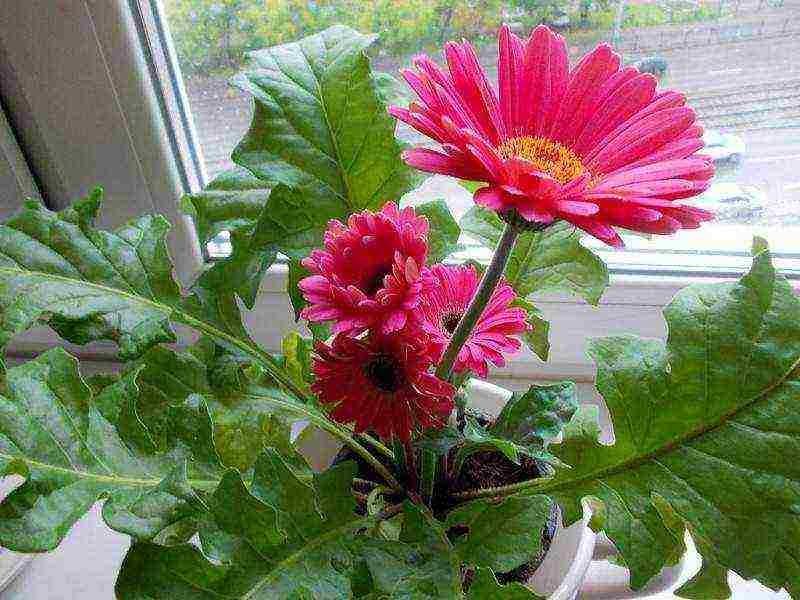
The temperature regime is provided depending on the season:
- in summer - 20-24 ° C;
- in winter - 16-20 ° C.
Important! Lowering the temperature to 12 ° C leads to the immersion of the flower in a state of dormancy, in which all processes slow down, flowering becomes impossible until awakening.
Watering
A tropical flower requires constant watering. Humidification should be carried out with settled water no colder than 20 ° C. Watering with cold water is very dangerous: the plant can get sick and even die.
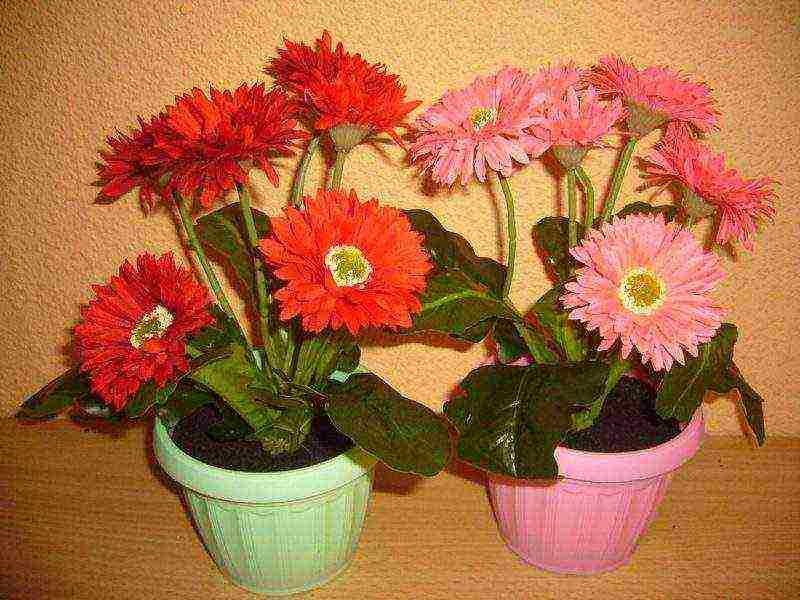
The procedure can be carried out in two ways:
- The plant is watered around the edge of the pot to avoid water getting into the outlet.
- Humidification with a pallet involves placing the pot in a container of water for half an hour.
Attention! Waterlogging of the soil must not be allowed: excess moisture can cause the development of rot on root outlets and dangerous pests - nematodes.
Air humidity
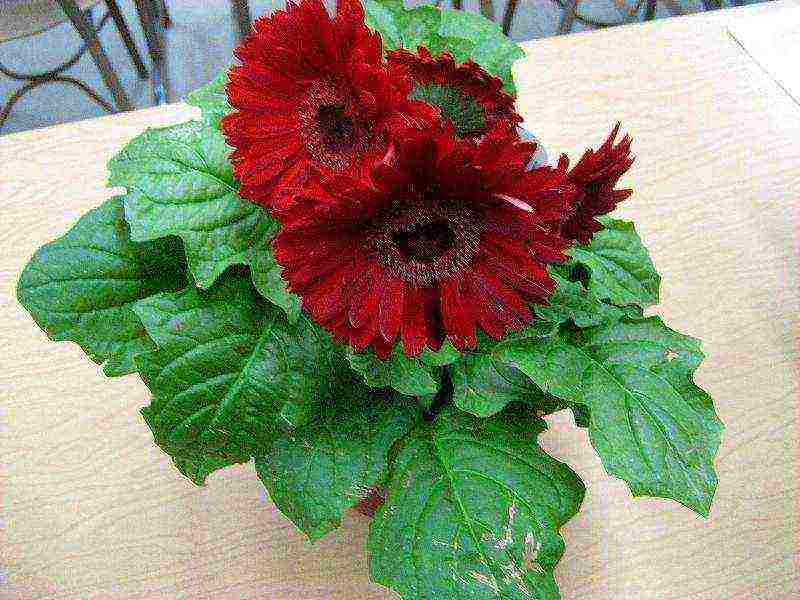
The exotic representative does not like dry air and will be very grateful for systematic spraying. However, the plant should be sprayed from a fine spray bottle that creates a water mist so that drops of water do not fall on the flowers.
Fertilization
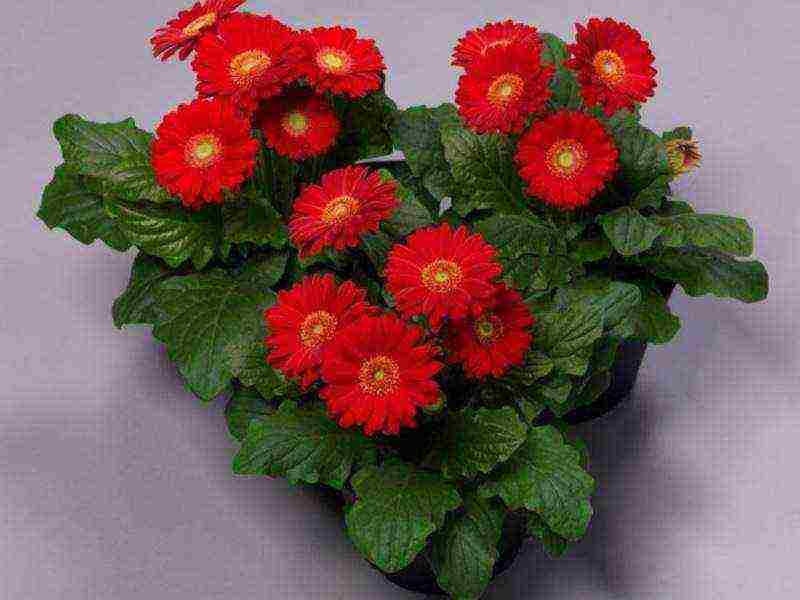
Indoor gerberas need additional nutrition and enrichment of the substrate with various macronutrients, depending on the phase of development:
- In the phase of growing green mass, which occurs from February to April and in the summer months, the plant is fed with nitrogen-containing mineral fertilizers.
- During the flowering phase, gerberas require fertilizing with a high potassium content, which ensures the splendor of the flower.
Important! When preparing a nutrient solution, it is necessary to reduce the concentration of mineral fertilizers by half from that indicated on the package. And also the use of organic matter is not allowed due to its intolerance to a tropical plant.
Transfer and soil requirements
The transplant is carried out annually after the end of flowering, when the plant is immersed in a "dormant" state.
At that time:
- A pot is prepared 2-3 cm larger than the previous one.
- Drainage from expanded clay or gravel is placed at the bottom.
- The container is filled with special soil for growing gerberas.
- The flower is taken out of the old pot carefully, so as not to damage the delicate root system, together with the earthen lump and placed in a new one.
- The root collar should be 2-3 cm above the surface of the substrate.
Gerberas prefer slightly acidic soils. The substrate for an indoor culture representative is purchased in specialized flower shops or prepared independently from leafy earth, peat and sand in a ratio of 2: 1: 1.
Diseases and pests
The culture refers to plants that are resistant to diseases and pests. However, a violation of the watering regime can lead to the development of rot, powdery mildew and viral diseases. With prolonged stagnation of moisture, not only in the soil, but also in the flower rosette, manifestations of late blight and fusarium are also noted. In this case, adjusting the care measures, as well as timely treatment with a fungicide solution, will help protect the gerbera.But, despite the negative consequences of waterlogging, low air humidity and a shortage of soil moisture can cause wilting and death of the plant.

The plant suffers from greenhouse whiteflies, thrips. In dry air, the appearance of a spider mite is also noted, which can only be eliminated by spraying with an insecticidal preparation "Actellik" or other analogs according to the manufacturer's instructions.
Reproduction of room gerbera at home
Domestic gerbera reproduces in two ways: vegetative and generative.
Vegetative method
The main method of gerbera reproduction is dividing the bush: during grafting, varietal qualities may not be preserved. Upon reaching the age of three to four years, the flower already forms several new bushes and can be planted. When separating the bushes, it is necessary to control that there are at least three growth points on each specimen. Rooting of a new plant lasts about six months, and flowering occurs ten months after planting.
Seed method
The method consists of the following steps:
- Seeds are sown for seedlings.
- For the first time, seedlings dive when one pair of true leaves is formed on the seedlings.
- After the formation of the second pair of leaves, the second picking of plants is carried out into separate pots.
The generative method is rarely used due to its laboriousness and low productivity.
The main problems in growing
Growing gerberas at home does not always go smoothly. Often, novice florists face certain difficulties associated with ignorance of the nuances of care.
Why do the leaves turn yellow?
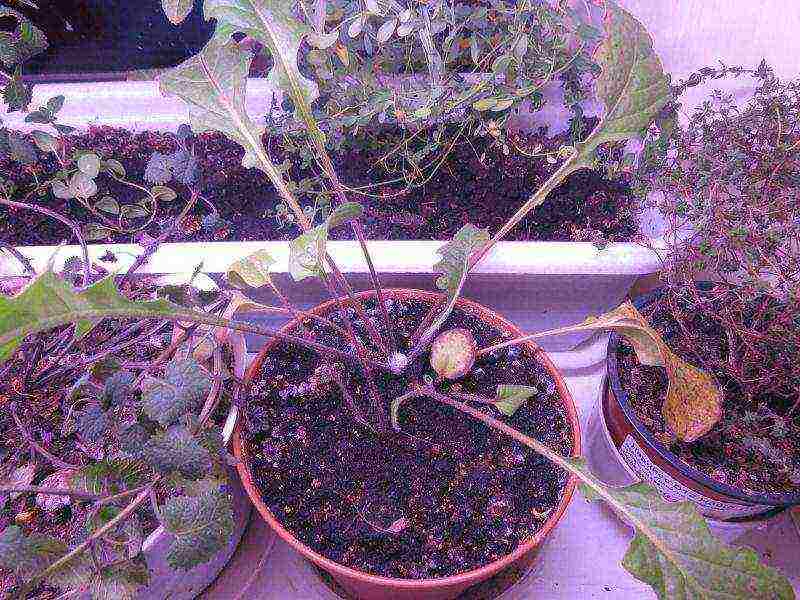
Among the reasons that can lead to yellowing of the leaves are:
- excessive watering, leading to stagnant water and provoking the development of rot;
- water ingress during watering into the plant outlet;
- excessive soil and air dryness;
- non-compliance with spraying rules;
- watering with cold water.
By providing adequate conditions of detention, problems can be avoided. If they have already arisen, then adjusting the care measures will allow you to solve them.
How to achieve lush bloom?

The abundance of flowering is in direct proportion to compliance with the agrotechnical requirements for growing gerbera at home:
- Lighting. In order for a gerbera to bloom, it needs a certain length of daylight hours - 12 hours. It blooms most abundantly from August to November, when this condition is met naturally. Also, the blooming state can continue until June, subject to the creation of additional lighting. But from June to August, when the sun is at its highest point, the gerbera stops blooming and increases the green mass.
- Top dressing. Do not use too many nitrogenous plants. They should be replaced with mineral fertilizers, which include potassium and phosphorus - superphosphate, potassium nitrate.
- Transfer. When the plant is transplanted, the size of the pot should be correctly selected: in a pot that is too large, the gerbera will not bloom, spending all the energy on building the root system.
Thus, if you follow all the recommendations for caring for an indoor flower, a delicate and beautiful gerbera will reward its owner with a long beautiful flowering.

Gerberas appeared in Russia at the end of the 18th century. At first, they did not cause much enthusiasm among our compatriots. Gardeners considered this chamomile-like flower too bright and even annoying. However, now the gerbera is inferior in popularity only to the queen of flowers. How to grow indoor gerbera at home?
The origin and appearance of gerbera
Gerbera is a perennial from the Aster family. In nature, it grows in South Africa and the tropics of Asia. This plant was first described by Dutch scientists at the beginning of the 18th century.
The flower was named after the German botanist T. Gerber.There is also another variant of the origin of the name: from the Latin word "coat of arms", which means "grass".
This plant is thermophilic, so it can grow outdoors only in hot countries. In colder climates, gerbera is grown in greenhouses or at home.
The roots of the plant are powerful. Light green leaves are located on short stems, combined into a rosette. The peduncle is high (up to 60 cm in height), pubescent. Gerbera flowers are chamomile-like inflorescences-baskets, the diameter of which reaches 12 cm. They are located on single peduncles.
Cut flowers tolerate transportation well and stay in a vase for up to 3 weeks. Gerbera occupies one of the first places in terms of the number of sales, so the cultivation of these plants is a whole industry.
Varieties and hybrids
There are dozens of gerbera species on sale now. For growing at home, undersized (up to 25 cm) hybrids were bred. Gerberas differ from each other in the size of the flower, the width of their petals, and also in color (it can be orange, white, yellow, red, burgundy, pink). There are varieties with striped flowers, variegated tips, strokes.
Most gerberas are derived from Jamson's green leaf and gerbera.
- Gerber Jameson (Jameson). The stem reaches 60 cm in height, the length of the leaves is 15 cm. It begins to bloom in August. Flowers are yellow, red, orange, white with a yellowish center.
- Mini. Convenient for breeding at home - their height does not exceed 30 cm.The color range is also varied.
- The festival. The most common species, well suited for home cultivation. Large flowers and short stems are characteristic.
- Green-leaved gerbera. The original species, from which all the others originate, is a plant with narrow-leaved, pale pink inflorescences.
- Gerber Wright. These flowers prefer open ground in warm climates or ideal greenhouse conditions.
Gerbera Jameson and other varieties - gallery
How to grow and how to care for a room gerbera - video
Conditions for gerbera in different seasons - table
Gerbera needs bright diffused light
Features of planting and transplanting
If the newly purchased gerbera is in bloom, then you need to replant it after the end of flowering. If there are no flowers on the plant, transplanting is recommended no earlier than 2 weeks after the "move" - the flower should get used to the new conditions.
Composing soil
Soil for growing gerbera must be used with an acidity of 5.5-6.0, does not tolerate humus and compost. It is recommended to select soil from:
- leafy land (2 parts);
- peat (1 part);
- sand and perlite (1 part).
You can add pine bark, cut into small pieces, or expanded clay.
Gerbera transplant workshop
Healthy adult gerberas are transplanted no more than 1 time in 2 years in early spring.
- The transplant will require an air-permeable clay pot with drainage holes, with a volume of 1–1.5 liters, the diameter of which is 2–3 cm larger than the previous one.
- A drainage layer (for example, expanded clay) of 1–2 cm is laid at the bottom of the tank.
Gerbera requires drainage at the bottom of the pot
- The soil suitable for gerbera is slightly acidic. Composition: leafy soil, peat, sand (2: 1: 1). There should be no humus or compost.
Soil composition for gerbera: leafy soil, peat, sand
- Taking out the gerbera from the old pot, you need to very carefully shake off the soil from the root, move the plant to a new container and sprinkle with fresh soil. The root collar must remain above the ground.
When planting, gerberas are taken out of the ground and the roots are carefully cleaned of it.
- Drizzle with warm water.
How to transplant a gerbera at home after purchase - video
Flower care
Watering and feeding are important points in caring for a gerbera.
How to properly water the transvaal chamomile?
The soil should not dry out, however, the plant will not tolerate waterlogging. Excessive amounts of water will provoke fungal diseases.
Water for irrigation needs soft, settled and warm (temperature not lower than 20 ° C). You need to pour it at the edge of the pot so that moisture does not get into the outlet. You can also add water to the pan, and after 0.5 hours, drain the remaining liquid.
Top dressing
Organic gerbera is not suitable. The flower is fed 2-3 times a month with complex mineral fertilizers: during the growth of leaves (in spring and early summer), fertilizing with a high nitrogen content is used, and during flowering - with potassium. Another feature is that you need to dilute the solution more strongly than the instructions suggest.
The first 3 weeks after transplanting the gerbera do not need to be fertilized.
A complex mineral fertilizer is used to feed gerberas.
Flowering period of the plant
In the first year of life, the plant gives about 15 flowers, in the second - up to 30. By 3-4, the flowering decreases, the bush must be replaced with a young plant.
Gerbera blooms depend on how much light it receives. The daylight hours that she needs are no more than 12 hours.
There are frequent cases when gerbera grows leaves in summer, and blooms profusely in August-November.
During flowering, a large temperature difference between night and day is not allowed.
When the flowers wither, they should not be cut off, but carefully broken off, because even a small part of the peduncle can cause the plant to rot.
Why doesn't gerbera bloom?
Flowering problems can occur in the following cases:
- the plant is overfed with nitrogen-containing fertilizers;
- a very large pot (in this case, the gerbera grows roots, and does not prepare for flowering);
- the plant is more than 4 years old;
- too long daylight hours (more than 12 hours);
- there is not enough green mass required.
How to ensure a dormant period at home?
The plant can bloom in winter, but this requires additional lighting and a temperature of at least 20 ° C. However, flower growers do not recommend exploiting the gerbera all year round, as this depletes the flower. Gerbera needs rest to accumulate strength for the new season. During the rest period, watering is reduced, and feeding is stopped. The temperature is lower than in summer - about 14 ° C.
In mid-February, you can start feeding, increase watering. Thus, the plant is "awakened", it begins to actively grow, preparing for flowering.
Care errors and solutions to problems - table
Diseases and pests, signs and control measures - table
Gerbera pests and diseases in the photo
Reproduction methods
Gerbera is propagated by seeds, dividing a bush or cuttings.
Seeds
Seed packs can be purchased at specialized stores. It should be taken into account that Gerbera retains good germination for only 7–8 months. However, flowers grown from seeds do not always retain the properties of mother plants. Even the shade of the inflorescences may differ from what is indicated on the bag.
- In late winter - early spring, sow seeds in a light soil mixture (leafy soil, sand, peat, perlite). Embedding depth - 2-3 mm. The optimum temperature is not lower than 18 ° C.
- Seedlings should appear in 1-2 weeks.
- Open the seedlings after 2-3 true leaves appear.
- After the appearance of 4–5 leaves, young plants should be cut open again and transplanted into separate containers.
It will take about 10 months from sowing seeds to the beginning of flowering gerbera
By dividing the bush
Suitable age for dividing a gerbera bush is 3-4 years. To reproduce in this way:
- Divide the bush into parts with 2-3 points of growth.
- The roots are pruned to 10 cm, processing the cuts with crushed charcoal.
- The divisions are planted in the substrate, placing the outlet above the ground by 1.5-2 cm.
The divided plant will begin to bloom no earlier than 10 months later.
Each separated plant should have 2-3 growth points
By cuttings
For propagation, a plant older than 1 year with a well-formed rhizome is required.
- In the spring, when the gerbera starts to grow, they take out the mother bush along with a lump of earth from the pot.
- The rosette is rinsed and carefully trimmed.
- The rhizome is planted in a greenhouse in a loose earthy mixture with a temperature of about 23 ° C. Slices should be 5 cm from the ground.
- After 1–1.5 weeks, young shoots will appear from the axillary buds. They are cut with a sharp knife with part of the root.
- Cuttings are planted in a loose peat substrate, moistened and covered with a transparent cap.
- Landings are provided with bottom heating up to 25 ° C.
- After a month, the rooted cuttings are planted in separate containers.
If cuttings are carried out in March-April, then the new plant will bloom in the second half of the year. With summer breeding, flowering will occur only in the next season.
Florist reviews about growing room gerbera
Gerbera can seem like a pretty whimsical plant. However, knowledge and proper care can lead to excellent results. Flowering is very beautiful, it is achieved by choosing the right soil, regular watering and providing the right amount of light.
I never cease to be convinced that life is beautiful. Rate the article:
(0 votes, average: 0 out of 5)
Recently, many garden flowers have moved into the home and are successfully grown in a pot. Here is a bright gerbera, not a capricious beauty at all, pleases the views of gardeners, standing on the windowsill.
Gerbera is a flower of the Aster family, which belongs to perennial plants. This flower is well adapted for growing not only in the garden, but also at home.
Not complicated at all home care for room gerbera... The height of this home-grown plant reaches 40-45 cm.
How to grow such a miracle on your windowsill? Is it possible to grow in the winter season?

Types of gerbera with photo
At home and with proper care, indoor gerbera can bloom several times a year. All the flowers presented, which are grown on plots and at home, have resulted from the selection of two varieties: classic green-leaved and Jameson. And within these species, varieties and varieties are separated by color, flower size, terry.
Low-growing and compact species are suitable for growing on a windowsill, which include the following varieties:
The festival is distinguished by a short stem and large multi-colored flowers.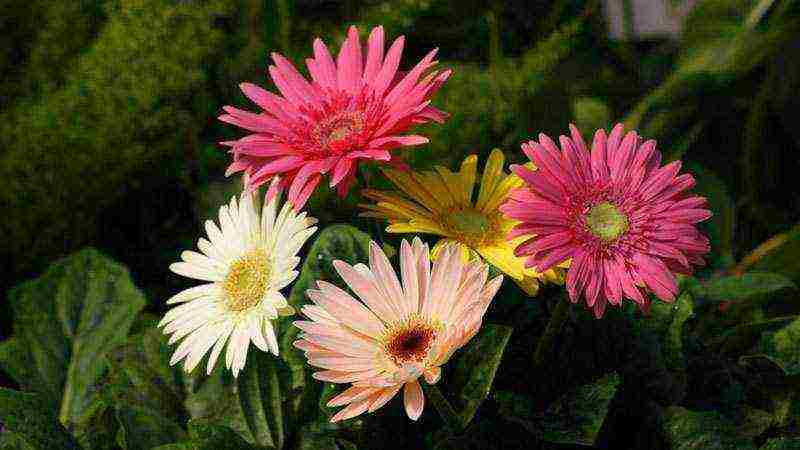 Aldebaran and Alcor - have small flowers and narrow leaves, often used for cultivation in production.
Aldebaran and Alcor - have small flowers and narrow leaves, often used for cultivation in production.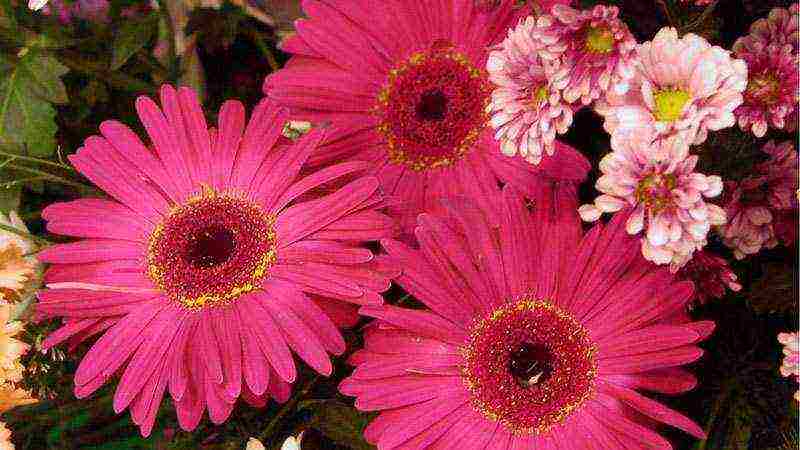 Jupiter, Vega, Migar - the flowers have narrow leaves, and the flowers are slightly larger.
Jupiter, Vega, Migar - the flowers have narrow leaves, and the flowers are slightly larger.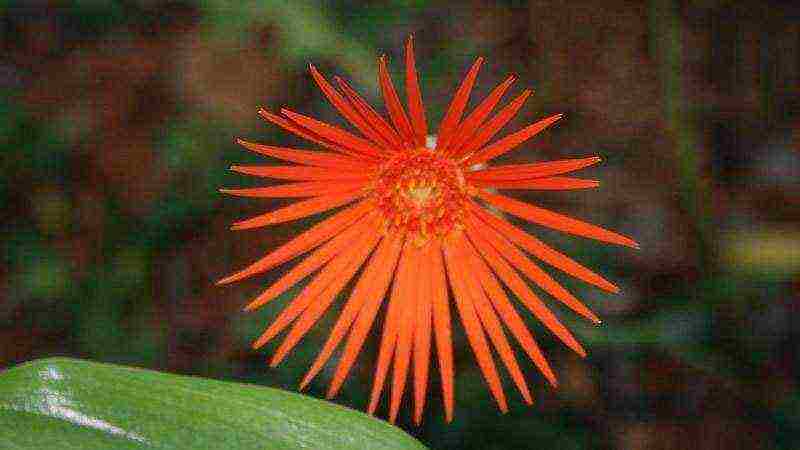 Mars - The flowers of this variety have medium-sized leaves and large flowers.
Mars - The flowers of this variety have medium-sized leaves and large flowers.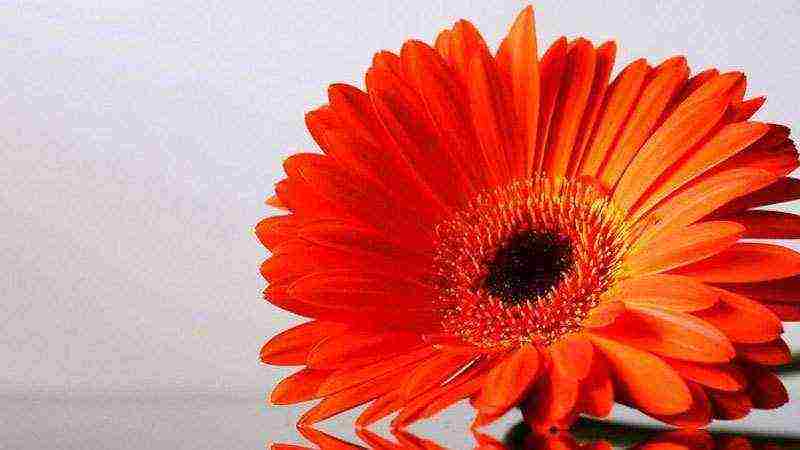
Gerbera Mix is especially popular with flower growers, which is distinguished not only by its beauty, but also by its various colors. It does not grow large when grown in pots and does not require much maintenance.
How a gerbera wakes up and falls asleep, video:
Growing gerberas from seeds
When purchasing gerbera seeds, you need to pay attention to the expiration date. They remain viable for up to 8 months from the date of collection, so the grower should not miss this moment.
The optimal time for sowing seeds is spring, but if there is a possibility of artificial illumination, then sowing can be done at any time.
Sowing of seeds occurs in the sequence:
- For sowing, you must first prepare the soil. It should be loose and light, and also consist of peat, sand, perlite and leafy earth. All components are mixed in equal proportions.
- In the container for planting, it is necessary to make drainage holes and pour expanded clay with a thickness of 3 cm.
- Now you should fill up the soil and tamp everything.
- Sow seeds on the surface of wet soil, lightly pressing them down and sprinkling with sand.
- Place the container in a warm place with a temperature of 16-20 degrees.
- The planted seeds are ventilated 2 times a day and the soil is moistened as needed - it should always be slightly moist.
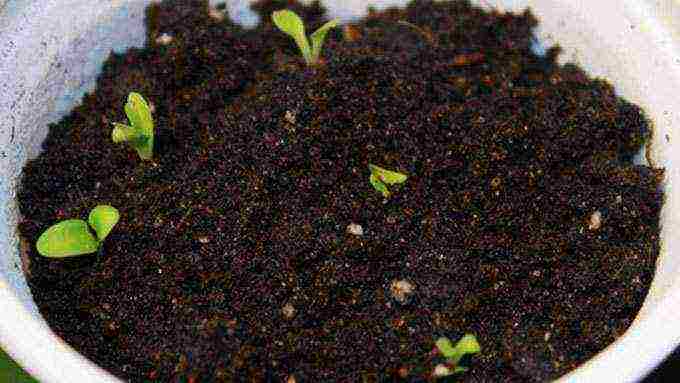
- After 8-12 days, the first shoots will appear.After the appearance of the leaves, it is necessary to dive the seedlings into a larger container, observing the distance for planting between them 7-8 cm.
- When 5-6 leaves appear, the seedlings must be planted in pots with a diameter of 10 cm.The soil in this case is already made from a mixture: one part of peat, sand, humus earth, sod land, two parts of leafy earth and a little perlite.
- Transplant the grown young gerberas into containers with a diameter of 15-20 cm.
Indoor gerbera begins to bloom only 9-11 months after planting and subject to proper care. If you allow small flaws in the care or transplantation, you can significantly postpone the flowering period.
How to care for a gerbera in a pot?
Growing a gerbera in a pot is not difficult. Compliance with certain rules and principles allows you to create a whole greenhouse of gerberas on the windowsill.

Care features
Gerbera, like any house plant, loves to be taken care of and taken care of. It is important to know how to do this, and the following important aspects are highlighted here:
-
Flowers prefer bright lighting and fresh air, so the room where the flower is located must be often ventilated, avoiding drafts.
-
The room temperature in summer should be +16 - +20 ° C, and in winter, when the plant is at rest, 12-14 degrees.
-
During the dormant period - from August to March - the gerbera grows leaves, thus preparing for flowering.
-
The plant is moisture-loving, so it should be watered often, but not zealous, as this can rot the roots. When watering, it is important not to touch the flowers themselves. It is better to water the gerbera through a sump, from where excess water is drained after a few minutes of soaking into the soil. The water temperature for irrigation should be about +20 degrees. In winter, gerbera is watered much less often.
-
You can spray the plant, but try to avoid getting water on the flower.
-
You can feed a flower only with a complex mineral fertilizer, because it does not tolerate organic solutions. From April to August, the frequency of top dressing is once every three weeks. During flowering, the gerbera should be fed with fertilizers with a high potassium content. And during the dormant period, fertilizers should contain more nitrogen. It is important to remember that the fertilizing solution must be of low concentration, otherwise you can harm the plant.
Proper care of indoor gerbera contributes to regular flowering and disease prevention. You should not be zealous with watering, spraying and fertilizing.
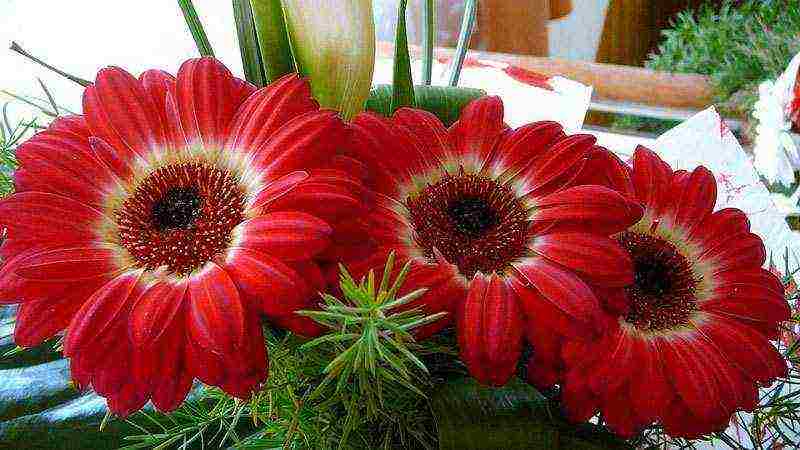
Gerbera care at home
There are advice and suggestions from specialists in caring for a home gerbera, which can ensure the correct growth and flowering of the flower.
So, the following aspects can be distinguished here:
- Photophilous gerbera stops blooming if there is too much light. It is advisable that the daylight hours of the gerbera lasts no more than 12 hours. In connection with this fact, it can be noted that from the end of August to November, it blooms especially magnificently.
- Winter for this plant is a dormant time, so it is better to give it a break from flowering, let it gain strength and overgrow with foliage.
- It is also necessary to monitor the flowering period of the gerbera. If the break in flowering is longer than three months, then the reason for the lack of bud formation is not in the lighting, but in something else.
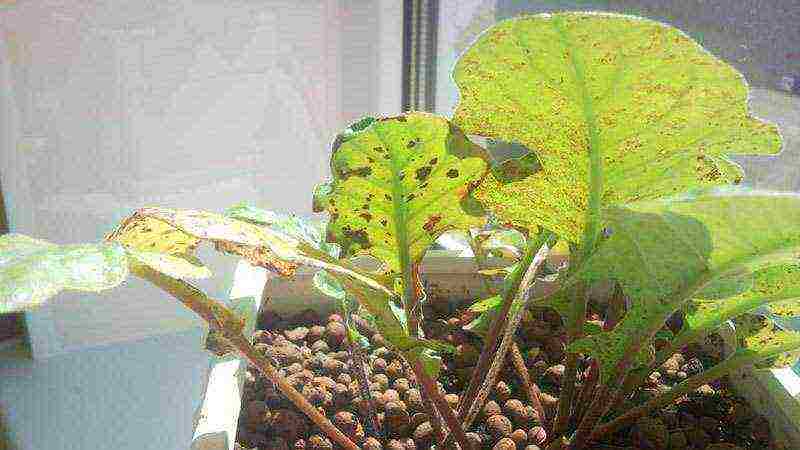
- Gerbera can stop blooming if planted in a pot that is too large, as a result of which all its forces will be used to strengthen and build up the root system.
- You cannot overfeed the plant with nitrogen-containing fertilizers, otherwise it will stop blooming altogether.
- Gerbera is accustomed to the tropical climate and tolerates hot summers much easier than cold. In winter, the pot can be on a glazed balcony at a temperature of 12-14 degrees Celsius, but for a short time. It is not recommended to often change the temperature of the flower - this may reduce the resistance of the plant.
Transplanting a gerbera into another pot must be carried out only at rest. The pot should be selected 2-3 cm larger than the previous one.
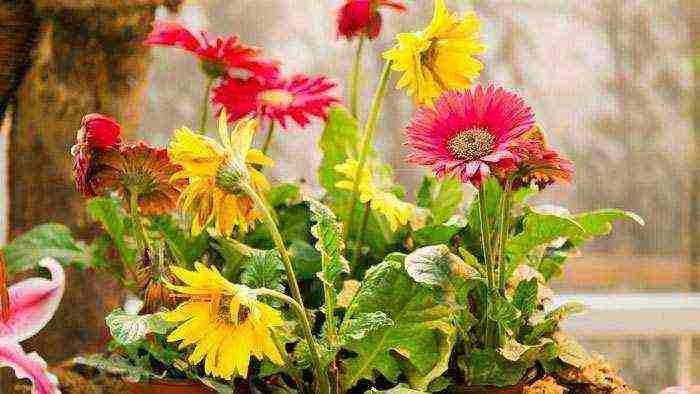
Gerbera propagation
A flower can be grown not only from seeds, but also by dividing the bush. From a lush gerbera bush, which is 3-4 years old, it is necessary to separate a bush, which by this time it should have formed several.
Plant the separated seedling in a pot, where within six months it will be mastered and rooted. Flowers on a new bush will appear only after 10-11 months.
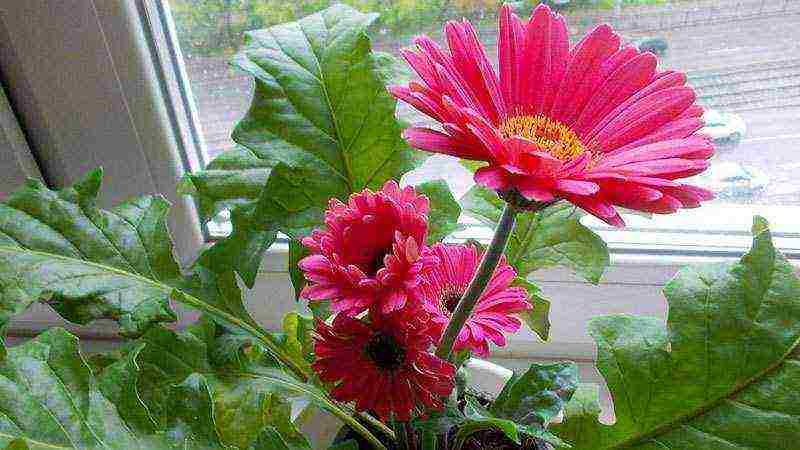
Gerbera pests and diseases
The presented plant is very resistant to diseases, but, in spite of everything, it is necessary to observe the watering regime. The roots should not be poured, otherwise they will begin to rot, and the rot will spread to the stem and leaves.
The most dangerous gerbera fungal diseases:
- Gray rot - affects the base of leaves, flowers and peduncles. A gray bloom appears on them, which leads to a gradual wilting of the plant. At the first manifestations of such lesions, the plant must be treated with the fungicides Fundazol, Rovral.
- Powdery mildew - more often affects young plants, appears in the form of a white bloom on the leaf stalks. If you do not take action, fungi will spread to flowers, buds and greens, as a result of which the flower may die. In such cases, the plant should be treated with the fungicides Topaz or Fundazol.

Dry air can also harm the flower - it can wither and dry out. In addition, it can provoke an infection with a spider mite, which will help get rid of treatment with fungicides. Excessive watering of the plant is fraught with late blight infection.
Gerbera care, video:
Gerbera garden: planting and care
Gerbera loves warm mild climates. When growing this bright flower in the garden, remember that in cold weather it simply will not bloom.
Choosing a variety for growing outdoors
To achieve a bright and regular flowering, it is important to choose the right flower variety. The following varieties are suitable for outdoor cultivation:
Each variety has its own requirements for growing conditions and care, so it is recommended to study the full information before buying.
Gerbera planting
You can plant a gerbera in the garden in three ways: by seeds, seedlings and by cuttings.
Planting by cuttings requires preparation. To do this, you need to dig out a gerbera bush, rinse the rhizomes and cut off the rosettes of the leaf.
Plant the rhizome in a greenhouse, and after two weeks sprouts from the axillary buds will begin to show. These are cuttings that after a while can be planted in the ground.
It is possible to grow seedlings from seeds only indoors. It is necessary to start sowing on the assumption that the gerbera will begin to bloom no earlier than 10-11 months later.
In the prepared soil, pre-treated with a solution of potassium permanganate, and also optimally moistened, seeds should be planted, slightly deepening them into the soil, and sprinkled with peat. Cover the bed with glass or foil.
It is important to ventilate and moisturize the soil every day, as seeds will only germinate in moist soil. Shoots will appear in 8-10 days.
Plant in open ground when constant warm weather is established, without frost. The sprouts themselves should grow to an acceptable size - have several pairs of leaves.
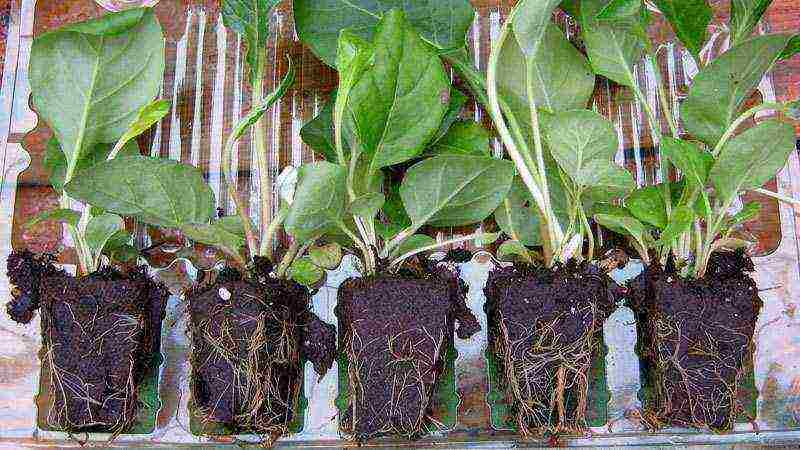
Features of growing gerberas in the open field
To grow gerberas in the garden, you need to choose a sunny place. When planting cuttings in the soil, you cannot deepen the stem, otherwise the root may rot. Seedlings need to be watered regularly and abundantly.
Gerberas bloom for 4 months, which means that the whole summer in the garden will be bright and sunny. It is necessary to water the flowers on the site with warm water, avoiding getting on the flowers. Once every two weeks, the plant should be fed with mineral fertilizers.
For the winter, gerberas are dug up and put into a room where the temperature does not drop below +7 degrees.At this time, it also needs to be watered and ventilated.

Pay attention to this material - Indoor hydrangea: home care.
Since the gerbera is a perennial plant, in the fall it can be left on the site, but covered with a thick layer of leaves or straw. In colder climates, the bushes can be grown as an annual plant.
The diseases in the garden gerbera are the same as in the home gerbera, and the processing methods are similar. Pests of plants planted in open ground: spider mites, thrips and aphids.
You will be interested in this article - How to transplant an orchid at home?
Attacking a gerbera, they cause its wilting, yellowing of the leaves and even the death of the bush. Having recognized the pest in time, the plant should be treated with insecticides.
Gerbera is a very beautiful and bright flower that delights the eye and improves mood. By planting seedlings in time and taking proper care of them, you can grow a healthy and flowering plant. Gerbera symbolizes modesty and tenderness, so give flowers to your loved ones and loved ones as a sign of great respect and admiration.
Like the article ? Show it to your friends:
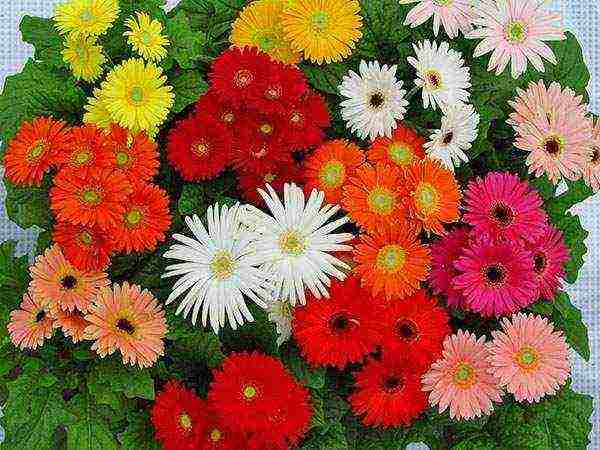 Gerberas are the favorite plants of flower growers, and there are many confirmations of this. They bloom for a long time with fantastically clear and bright colors. In the palette of shades, only blue tones are missing (although it is easy to find them on sale). Beautiful large flowers with contrasting color centers rest on strong, long, bright green stems. Blooming flowers are extremely hardy and can stand in water for up to three weeks. All this makes the gerbera one of the best in the cut culture after roses, carnations, tulips and chrysanthemums. Many amateur and artistic photographs of gerberas confirm this fact.
Gerberas are the favorite plants of flower growers, and there are many confirmations of this. They bloom for a long time with fantastically clear and bright colors. In the palette of shades, only blue tones are missing (although it is easy to find them on sale). Beautiful large flowers with contrasting color centers rest on strong, long, bright green stems. Blooming flowers are extremely hardy and can stand in water for up to three weeks. All this makes the gerbera one of the best in the cut culture after roses, carnations, tulips and chrysanthemums. Many amateur and artistic photographs of gerberas confirm this fact.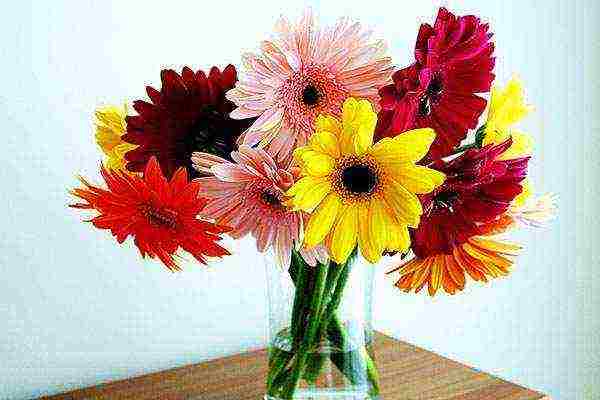
But in recent years, this bright beauty has become popular as a houseplant.
Description of the plant
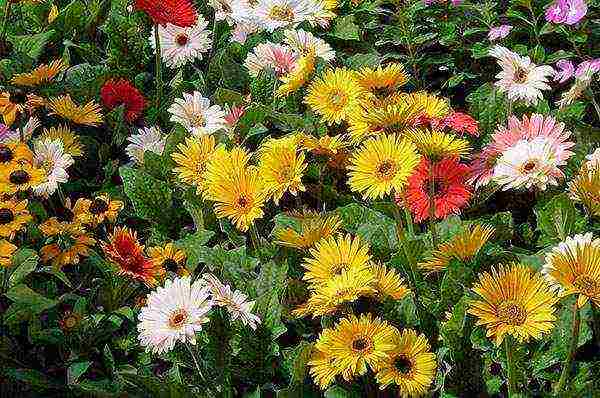 Gerbera belongs to the genus of perennial grasses from the Astrov family. Most of the species are native to Africa and tropical Asia. Its flowers are similar to a large chamomile and in English-language literature they are called "transvaal chamomile". Elongated leaves are collected in a basal rosette. Peduncles are tall, strong, have no leaves.
Gerbera belongs to the genus of perennial grasses from the Astrov family. Most of the species are native to Africa and tropical Asia. Its flowers are similar to a large chamomile and in English-language literature they are called "transvaal chamomile". Elongated leaves are collected in a basal rosette. Peduncles are tall, strong, have no leaves.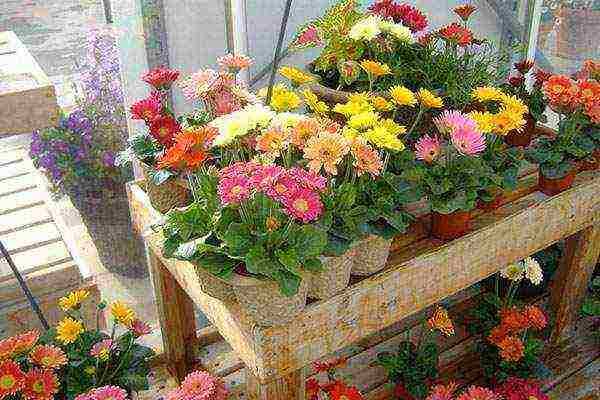 The flowers are a basket inflorescence. Their sizes in some varieties reach 30 cm. Elegant giants bloom for 3-4 months. Seeds remain viable for a very short time - about 6 months, so when buying seeds, you need to monitor both the expiration date and the time of their collection.
The flowers are a basket inflorescence. Their sizes in some varieties reach 30 cm. Elegant giants bloom for 3-4 months. Seeds remain viable for a very short time - about 6 months, so when buying seeds, you need to monitor both the expiration date and the time of their collection.
How to grow a gerbera in a flower bed
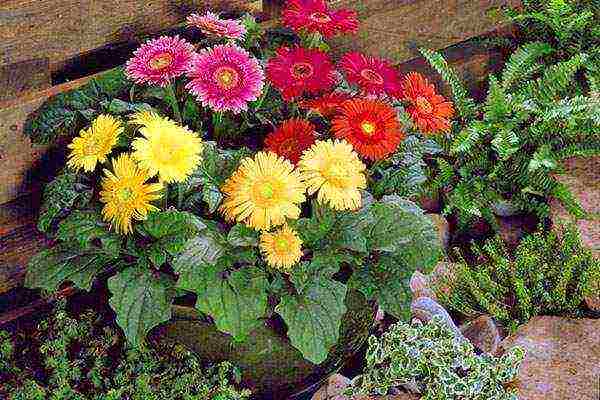 Growing a gerbera in the garden and caring for it is simple and fun, but requires compliance with the conditions necessary for a long and lush flowering.
Growing a gerbera in the garden and caring for it is simple and fun, but requires compliance with the conditions necessary for a long and lush flowering.
 In southern Russia, gerbera blooms from spring to autumn and hibernates without shelter without any problems. In the middle lane, flowering will be more modest, and for the winter the gerbera will have to be dug up and stored with a lump of earth in a cool, dry place.
In southern Russia, gerbera blooms from spring to autumn and hibernates without shelter without any problems. In the middle lane, flowering will be more modest, and for the winter the gerbera will have to be dug up and stored with a lump of earth in a cool, dry place.
In areas with mild warm winters, gerberas are covered with leaf litter and covering material, dispensing with digging.
Gerbera planting
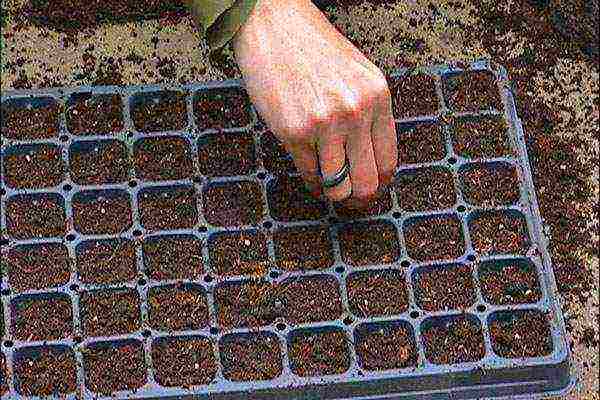 Planting and following garden gerbera daisies begins at the end of winter. The plant is grown in seedlings. Seeds are sown in seedling containers from January to March in a mixture of garden soil with sand and compost. The seeds are covered very shallowly, only slightly sprinkling with earth. Seedlings, as a rule, are uncooperative and appear in 10-12 days.
Planting and following garden gerbera daisies begins at the end of winter. The plant is grown in seedlings. Seeds are sown in seedling containers from January to March in a mixture of garden soil with sand and compost. The seeds are covered very shallowly, only slightly sprinkling with earth. Seedlings, as a rule, are uncooperative and appear in 10-12 days.
When sowing seeds for seedlings, it is necessary to take into account their low germination and increase the seeding rate.
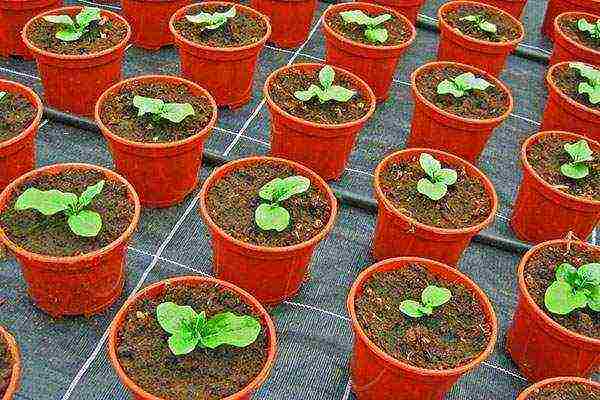 After the appearance of several true leaves, the sprouts are planted in boxes or immediately in separate pots. The lightest window sills are chosen for seedlings. Seedling care consists in regular moderate watering.
After the appearance of several true leaves, the sprouts are planted in boxes or immediately in separate pots. The lightest window sills are chosen for seedlings. Seedling care consists in regular moderate watering. 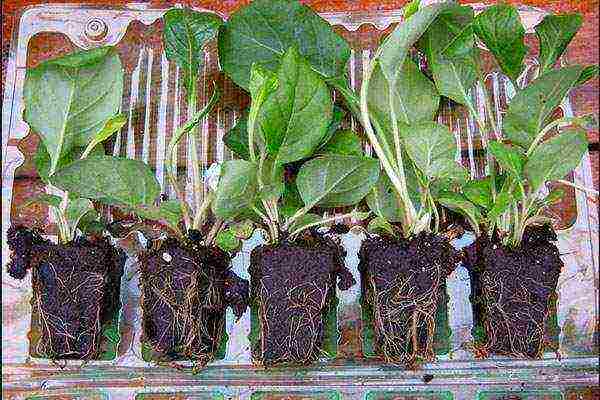 When watering, water should not get into the root outlet, as the plant rots easily. Excessive watering threatens the appearance of thrips on the surface of the earth.In this case, both the plant and the soil surface are treated with Fitoverm.
When watering, water should not get into the root outlet, as the plant rots easily. Excessive watering threatens the appearance of thrips on the surface of the earth.In this case, both the plant and the soil surface are treated with Fitoverm.
When propagated by seed, gerberas may not retain the color of their parent plants.
Outdoor Gerbera Care
 Gerbera seedlings are planted in open ground after the threat of frost disappears. This usually happens in the second half of May. Choose a sunny place for landing. The best soil for them is light, drained, with inorganic fertilizers applied.
Gerbera seedlings are planted in open ground after the threat of frost disappears. This usually happens in the second half of May. Choose a sunny place for landing. The best soil for them is light, drained, with inorganic fertilizers applied. 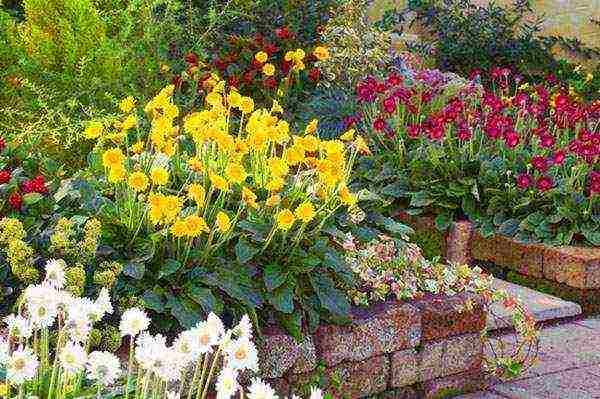 With an excess of organic matter in the ground, the peduncles are strongly stretched. Fading inflorescences must be removed in a timely manner. This stimulates the emergence of new ovaries. During active growth and flowering, the gerbera is watered abundantly, preventing water from entering the outlet. After flowering, the soil is moistened only after the earthen coma has dried.
With an excess of organic matter in the ground, the peduncles are strongly stretched. Fading inflorescences must be removed in a timely manner. This stimulates the emergence of new ovaries. During active growth and flowering, the gerbera is watered abundantly, preventing water from entering the outlet. After flowering, the soil is moistened only after the earthen coma has dried.
In autumn, the gerbera is covered or dug up with a clod of earth. The shelter is made dry and ventilated so that the flower does not rot during the thaw.
If there is a possibility of freezing, it is better to dig it up and store it in the basement or on a glazed veranda at a temperature of 7-8 ° C.
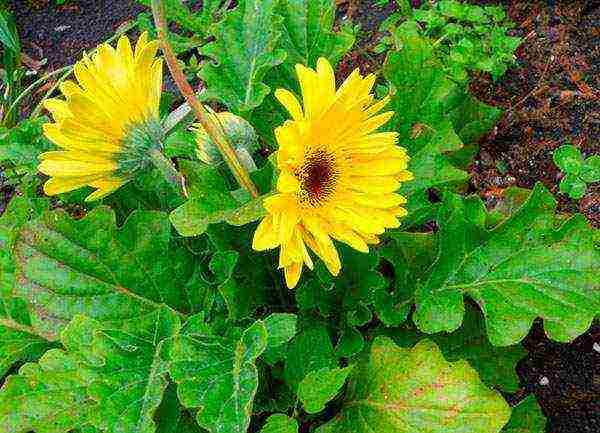 In the spring, the gerbera is transferred into a pot that is suitable in size, transferred to a warmer and lighter place, and watering is increased. In late April - early May, an adult plant is planted in open ground.
In the spring, the gerbera is transferred into a pot that is suitable in size, transferred to a warmer and lighter place, and watering is increased. In late April - early May, an adult plant is planted in open ground.
Overwintered gerberas do not need to be transplanted to the flower bed. Leave them in pots to decorate seating areas, gazebos, veranda, porch. Without a transplant, plants get sick less and begin to bloom earlier. Do not forget to feed them with complex mineral fertilizers.
How to grow gerbera indoors
 For growing in indoor conditions, dwarf species of Jameson's gerbera are chosen. They are sold in bouquets in flower shops. Having received an adult gerbera plant from seeds at home through seedlings, it is kept on the east and west windows. On the south side, it is shaded at noon. For better flowering, they maintain a temperature of 22-24 ° C and try to prevent its strong drops in day and night values.
For growing in indoor conditions, dwarf species of Jameson's gerbera are chosen. They are sold in bouquets in flower shops. Having received an adult gerbera plant from seeds at home through seedlings, it is kept on the east and west windows. On the south side, it is shaded at noon. For better flowering, they maintain a temperature of 22-24 ° C and try to prevent its strong drops in day and night values.
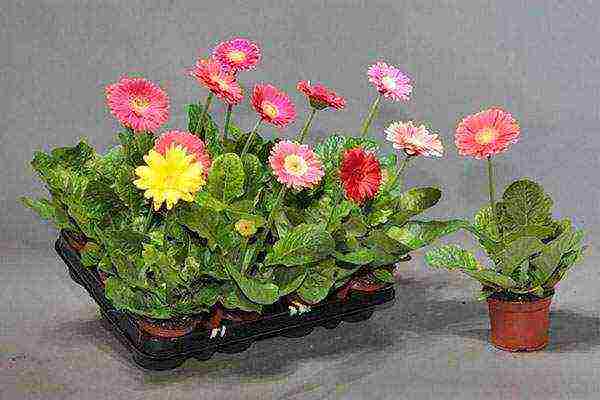 At the end of flowering, the plant is transferred to a cooler place. How to properly care for a gerbera in winter? During the dormant period, the plant needs coolness and very moderate watering. In cold weather, the flower needs additional lighting.
At the end of flowering, the plant is transferred to a cooler place. How to properly care for a gerbera in winter? During the dormant period, the plant needs coolness and very moderate watering. In cold weather, the flower needs additional lighting.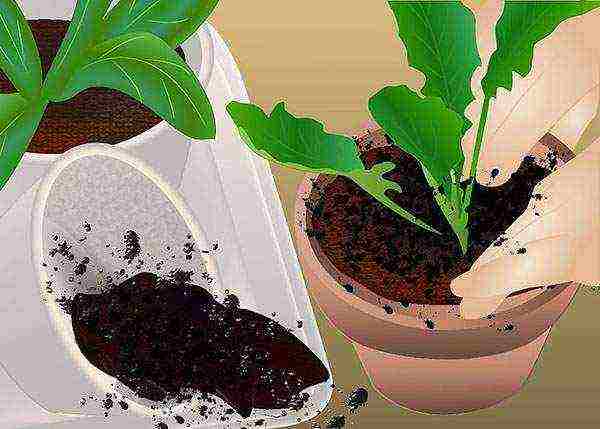
How to prolong flowering in a bouquet
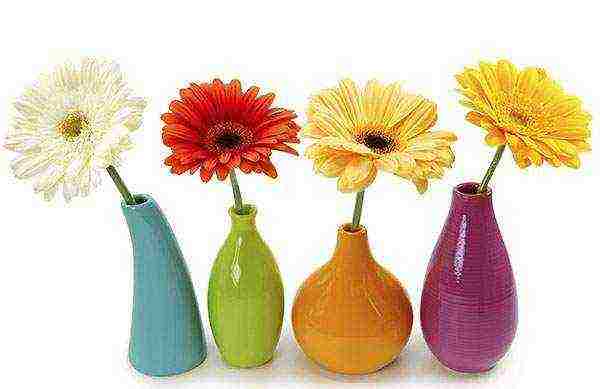 Having received a luxurious multi-colored bouquet as a gift, you probably wondered how to keep gerberas in a vase longer. In fact, cut gerbera is not capricious and phenomenally tenacious. Flowers can come to life, even if you had to walk with a bouquet all day.
Having received a luxurious multi-colored bouquet as a gift, you probably wondered how to keep gerberas in a vase longer. In fact, cut gerbera is not capricious and phenomenally tenacious. Flowers can come to life, even if you had to walk with a bouquet all day.  That is why they like to give gerbera compositions to brides - flowers will not lose their will to live for the whole day and will come to life before our eyes if you put the ends of the stems in water and support heavy heads. For such a procedure, a lattice is suitable, through the cells of which the stems are passed.
That is why they like to give gerbera compositions to brides - flowers will not lose their will to live for the whole day and will come to life before our eyes if you put the ends of the stems in water and support heavy heads. For such a procedure, a lattice is suitable, through the cells of which the stems are passed.
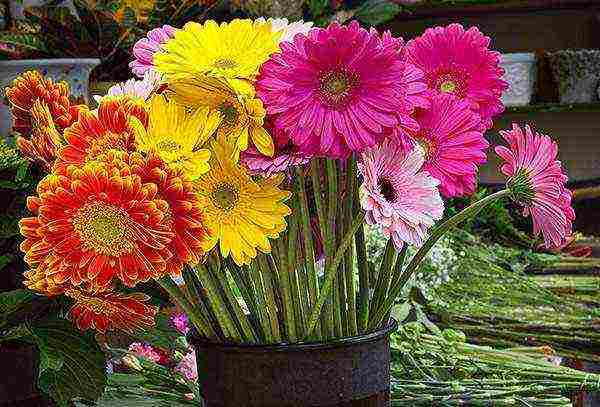 To keep the bouquet in a vase, use the following guidelines:
To keep the bouquet in a vase, use the following guidelines:
- change the water every day;
- choose a tall and narrow vase so that the flowers do not bend under their own weight;
- pour water a few centimeters so that the stems do not rot;
- trim the softened ends of the stems before the next water change;
- cut the stems obliquely and make small punctures or longitudinal cuts at the bottom of the stem. This will help the water to be absorbed better.
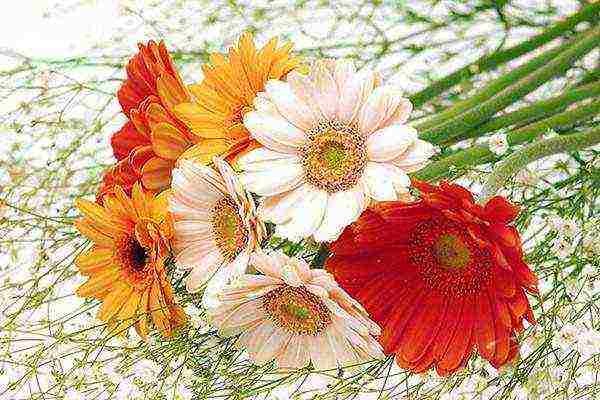 Subject to these simple conditions, a gerbera bouquet will delight you with fresh and bright flowers for up to three weeks.
Subject to these simple conditions, a gerbera bouquet will delight you with fresh and bright flowers for up to three weeks.
Gerbera transplant after purchase - video


